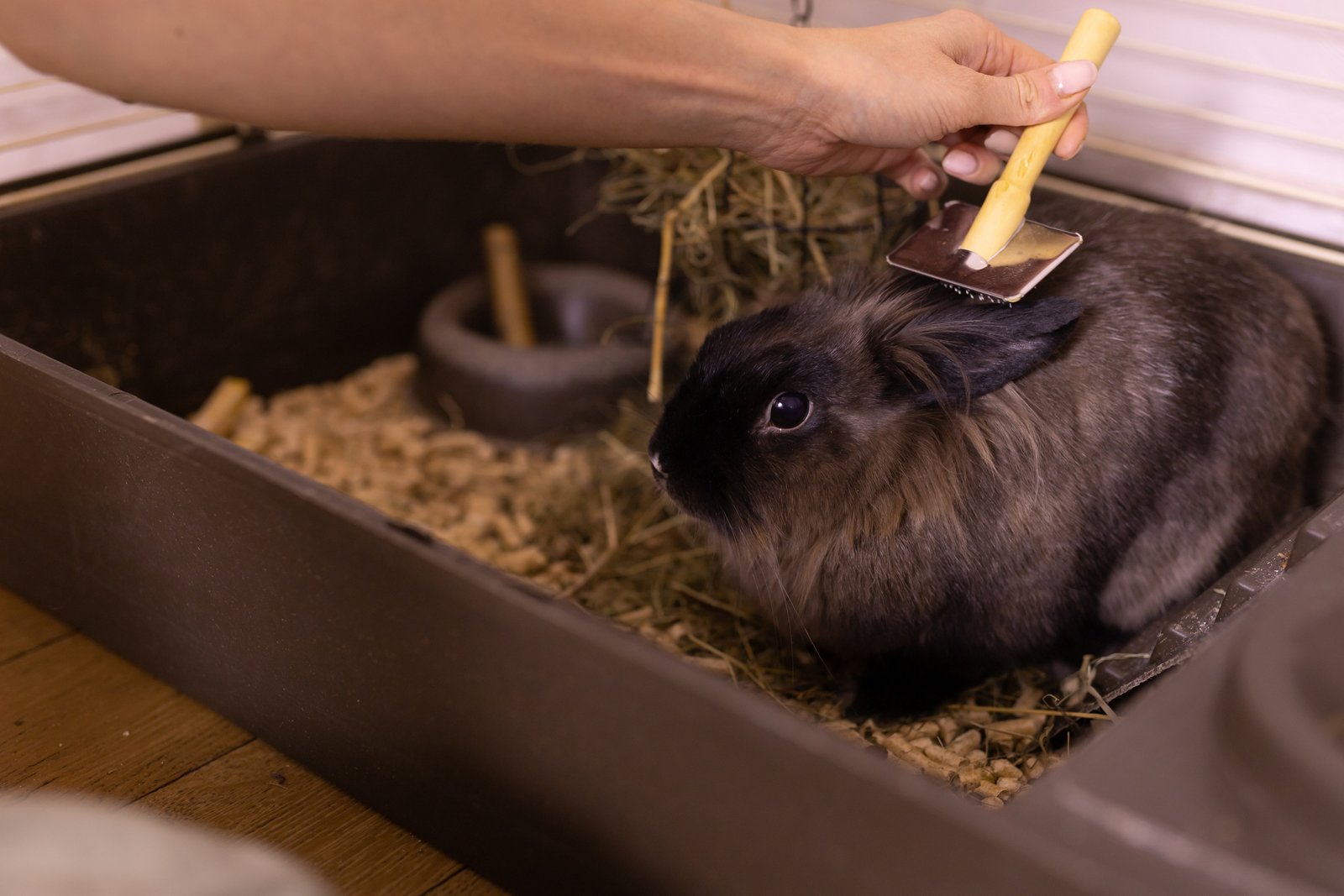There are things new rabbit owners need to know so they can have happy and healthy pets. Caring for rabbits requires commitment. Because of the unawareness of some owners, many rabbits are homeless. Some of them are in rescue homes, waiting for someone to love and care for them. This blog post will tackle the ten things new rabbit owners need to know.

Proper Diet
One of the primary things new rabbit owners need to know is the proper diet for their pets. Rabbits are herbivores. Hence, you must provide them with a plant-based diet rich in fiber. It aids their digestion and trims their teeth. The best source of fiber is hay. It must be 70% to 80% of your bunny’s diet.
However, choose suitable hay for your pet since different types are available. For young bunnies, alfalfa is highly recommended. It is rich in calcium and protein that support their growth. But you must slowly switch them to timothy hay between the age of six months and a year. It is because too much calcium can be dangerous to adult rabbits.
Besides alfalfa and timothy hay, you can feed your bunny with orchard hay, oat hay, and bromegrass. Orchard hay is high in fiber and low in calcium and protein. Meanwhile, oat hay is rich in fiber, vitamins, and minerals and can be mixed with other types of hay. Bromegrass is also a good option for an adult bunny because it is effective in aiding digestion.
As a supplement for your rabbit’s diet, you can add a variety of leafy greens. You can feed your bunny at least one to three cups of leafy greens. If you want to provide new vegetables to your bunny, you must introduce them gradually. Observe if the droppings of your pet become wet and mushy. If this is the case, stop feeding the veggies to your rabbits.

Proper Handling
Because of bunnies’ fragile bones, proper handling is one of the things new rabbit owners need to know. Many rabbits suffer from broken limbs and vertebral fractures. It is essential to win your bunny’s trust before you pick it up. A nervous rabbit tends to struggle and jump out of its owner’s arms, leading to broken bones.
One way to calm your pet is by giving its favorite treats. It will keep your bunny distracted by diverting its focus. You can also cover a soft towel on its head since it can make your bunny feels secure. If your pet doesn’t want to be picked up, never force it. It may only lead to stress or aggression. Wait until your bunny is ready to be carried or held.
When picking up your bunny, never pick it up on its ears, scruff, leg, or tail. These are vulnerable parts of rabbits that may get injured when pulled forcibly. Lift it from underneath while supporting its thorax and hindquarters. Ensure that its hind feet are resting flatly in your palm.
If you must pass your pet to a friend, don’t do it mid-air since your bunny may fall. Put it on a table or the ground, and let your friend pick up the bunny. You must handle your bunny correctly. Mishandling your pet can make it fearful and aggressive towards you. If you have small children, supervise them when picking up your pet.

Suitable Enclosure
As active pets, rabbits need enough space to move and stretch comfortably. The lack of space will limit their movements, preventing them from exercising fully. It may result in osteoporosis or a fractured limb or spine. Knowing the suitable enclosure is one of the things new rabbit owners need to know.
When choosing an enclosure for your bunny, always consider its size. For small to medium rabbits, the required size of the hutch is at least 24″ wide x 24″ high x 36″ long. However, if you have giant rabbits like Flemish Giants, the ideal size of the enclosure is 36″ wide x 36″ tall x 120″ long. As a general rule, the hutch must be large enough for the bunny to stretch comfortably. It must also be high enough for the bunny to stand without touching its ears to the top.
Since rabbits’ paws don’t have pads, the hutch must have solid flooring. Avoid using wire flooring on the bunny’s enclosure since it can cause sore hocks to rabbits. Some of the best options are vinyl flooring, puzzle tiles, and horse stall mats. You can also use carpet roll ends and grassy mats.
You must also remember to put all the supplies the bunny needs inside its enclosure. Provide your bunny with a water bottle, food bowl, and comfortable bedding. Provide your pet with an exercise area to perform activities like hopping on a platform. The exercise area must be at least 24 square feet.

Behavior
Understanding a bunny’s behavior is one of the things new rabbit owners need to know. Unlike other household pets, bunnies are quiet creatures. Hence, there are times when it is difficult to understand what they want. But knowing the meaning of their gestures will make it easier for you to give what they need.
One way of determining your rabbit’s mood is by observing the position of its ears. If they are pointing upwards, your bunny is happy and satisfied. But if its ears start to twitch, your pet is curious because of the loud noise. Your bunny is scared when its ears are apart and flat back.
Apart from the position of the ears, bunnies may also make noises to express their moods. It may grunt to show displeasure. You may have moved the items inside its hutch, and it is not happy with your arrangement. Although rare, a bunny may scream due to intense pain. If this happens, don’t hesitate to bring your bunny to the vet immediately.
Your pet may also ask for your attention by nudging its toy toward you, wanting you to play with it. You don’t have to panic if you have seen your bunny fall over its side, showing its belly. It means that your bunny is tired yet satisfied. You can imitate your bunny’s behavior to win its trust, implying that you understand its needs.
Grooming
Rabbits are pets that love to clean themselves. However, they need your help so they’ll remain hygienic and healthy. Hence, grooming is one of the crucial things new rabbit owners need to know. Without good hygiene, a rabbit may suffer from flystrike and mites.
You must brush your coat regularly to prevent your bunny from ingesting its fur. If it’s a short-haired bunny, you can brush its coat at least once or twice a week. But if you have a long-haired rabbit like Angora, you must comb its coat thrice a week. When the bunny is shedding, brush its coat daily to prevent matted and tangled fur.
Furthermore, clipping your bunny’s nails is necessary. Rabbits that have long nails are more prone to injuries. You must use nail clippers that are designed for small animals. Also, be careful when cutting your pet’s nails since you may cut its quick, leading to bleeding. You can bring your bunny to a groomer if you don’t know how to trim its nails.
Another task that you should remember is to check your pet’s teeth. Unlike cats and dogs, rabbits’ teeth continuously grow as long as they live. Overgrown teeth may lead to discomfort, affecting your rabbit’s appetite. You must provide your bunny with unlimited hay to prevent this from happening. You can also give it some chew toys and safe branches.

Rabbit-Proof
Many owners prefer to have indoor rabbits. Hence, making their homes rabbit-proof is one of the things new rabbit owners need to know. Rabbits are curious pets. So, they will explore everything in your house. They may also bite some items that they find interesting. Before letting your pet live inside your home, you must know how to rabbit-proof your home.
First, you must secure all the wires and cables inside your house. Rabbits chew them most of the time, thinking that they are roots. They ended up being electrocuted. Using hooks, you can secure the wires and cables by hanging them on the wall. If you cannot hang them, you can cover them with plastic loom tubings or PVC pipes.
Rabbits love to squeeze into small spaces. Hence, you must ensure that your pet won’t squeeze into the furniture and have an accident. As much as possible, place your bunny in a room with no furniture. You can also rearrange the furniture so your bunny cannot get behind them.
Lastly, you must hide toxic household plants since your pet may eat them and get poisoned. You can place them where your pet cannot reach them. Putting the plants on the racks is also recommended. Also, ensure that harmful chemicals, such as cleaning agents, are hidden from your pet.
Exercise
Since rabbits are active pets, they need four hours of exercise daily. A lack of exercise may lead to obesity, resulting in severe health conditions. Moreover, rabbits that don’t have plenty of activities tend to get bored. Hence, they show destructive behaviors such as pulling their furs.
There are plenty of exercises that you can provide for your bunny, such as leash walking and foraging. You can also encourage your bunny to dig and hop by letting it play outdoors. If you don’t have time to let your bunny explore outdoors, let it roam freely inside your home.
However, you should always prioritize your bunny’s safety when exercising. Only let it go outdoors with your supervision. You must also provide it with platforms where it can hop safely. For old rabbits, give them light activities since their bones are brittle. Watch this video below and learn the daily exercise requirements for rabbits.
Proper health care
Rabbit health care is one of the crucial things new rabbit owners need to know. Bunnies may experience diseases due to their environment, age, or breed. A bunny living in poor conditions may suffer from flystrike and mites. Hence, you must prioritize your bunny’s hygiene by grooming it regularly.
Aside from its environment, the rabbit’s age can also affect its health. Young bunnies are more prone to coccidiosis due to their weak immune system. On the other hand, old bunnies may experience osteoporosis due to their brittle bones. If you are adopting a senior or a young bunny, you must provide special attention to their health.
Some diseases are common to all bunnies. Some of these are gastrointestinal stasis, dental disease, and head tilt. They are also prone to uterine tumors and respiratory tract infections. However, some breeds are more prone to specific health conditions. For example, dwarf rabbits suffer from malocclusion due to their tiny heads and long jaws. Meanwhile, giant rabbit breeds may experience sore hocks due to their weight.
You must keep your bunny healthy by bringing it to the vet regularly. You must also know the symptoms if your pet is ill. In addition, keeping a rabbit first-aid kit is helpful. It is useful if your bunny is injured. Besides a proper diet, you can also give supplements to your bunny to have the vitamins it needs.

Litter Training
As intelligent pets, rabbits can learn how to use their litter box. It is one of the valuable things new rabbit owners need to know. By training your bunny to use its litter box, you will be able to monitor its health. Furthermore, it will keep your home tidy, especially if your bunny is living indoors. Rabbits also love litter boxes.
Before teaching your pet how to use its litter box, you must provide it with the correct litter box. Its size must be large enough to accommodate your bunny. Aside from that, there are different types of litter boxes that you can choose from. Some are wire racks, low-rise, corner, and rectangular.
In training your pet, you set up the litter box and place it in your rabbit’s preferred spot. You must give your bunny some time to recognize its use. Putting feces inside the litter box can help your bunny identify where it should poop. Once your bunny starts using its litter box, remember to clean it daily.
Spaying/Neutering
Before getting bunnies, spaying or neutering is one of the things new rabbit owners need to know. When rabbits turn into “teenagers”, their hormones will start raging. You may notice new behaviors, such as getting too territorial or aggressive. They may also spray their urine in different places to mark their territories.
But these destructive behaviors can be minimized by spaying or neutering your bunny. You can also expect your pet to be calm with you and with other rabbit companions. Hence, strengthening the bond with your pet would be easy. It will also give your pet more opportunities to socialize and thrive.
In addition, unneutered or unspayed rabbits are more prone to reproductive diseases. But by spaying or neutering them, these diseases can be prevented. Research also proved that spayed or neutered rabbits have a longer life expectancy.

Conclusion
As a new rabbit owner, you must know a few things. By being aware of your bunny’s needs, you can give it the best life it deserves. Besides the physical necessities, you must also provide for your pet’s emotional needs. Your rabbit will reciprocate your commitment with great and lasting companionship.



